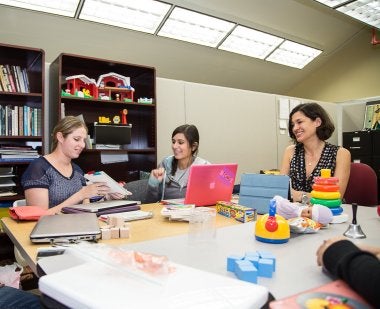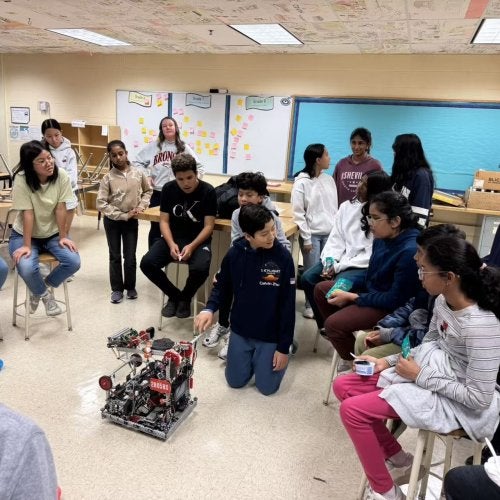

Broaden Lens on Early Childhood Development in Latino Families, Study Recommends

A recent report suggests that studies on how early home experiences influence the development of Latino children in the United States are limited in scope and often lack a theoretical basis. Instead, studies tend to focus on the adversities faced by Latino families, rather than on their strengths, and do not consider the heterogeneity of Latino families in the United States.
“What we know about Latino children in this country is very negative. We don’t know much about the positive things that these kids experience,” says study author and University of Maryland College of Education Professor Natasha Cabrera. “It’s a very skewed picture of kids.”
Latino children account for a quarter of children in the United States, and are the fastest growing racial/ethnic group in the country. The report, published by the National Research Center on Hispanic Children and Families, evaluates 63 studies on the early home environment of Latino children, including newborns to children up to 8-years-old. The study considers family resources, family functioning, parental investment in their children’s development and parental attitude and beliefs about parenting.
“For a population that’s pretty large, we just don’t know the challenges that these children face in many of these categories, like parenting or mental health issues of the parents, nor do we know the good things that they’re experiencing at home that can help them grow and develop,” Dr. Cabrera says.
COE senior doctoral student Avery Hennigar is a co-author for the study. In their analysis, the researchers identify key understudied areas in the early home environments of Latino children, and describe implications for research, programs and practice.
Importantly, the researchers note that critical gaps of knowledge exist in what is known currently of Latino children’s early home environment. Studies mainly focus on select aspects of the home environment, such as time given to literacy activities, maternal education and parenting stress, while other factors, like family structure and cultural beliefs, are largely ignored.
Additionally, studies often point out the deficits of Latino families, and fail to recognize factors that promote Latino children’s social development, the researchers say. For instance, most Latino children live in two-parent families, but fathers are mostly absent from the literature, and therefore, paternal influence on Latino children’s development is overlooked.
“One strength of Latino children is that they often live with two parents, but we know little about Latino fathers and we know little about how having two parents at home helps these kids get through their early childhood period,” Dr. Cabrera says.
Finally, few studies explore the diversity of Latinos, with findings often generalized to all Latinos in the United States. Moreover, how the intersection of characteristics like socioeconomic status, nativity, immigration status and practices of cultural socialization influence Latino children’s behaviors remains understudied.
“There’s lots of variability in terms of education, immigration history and cultural context,” Dr. Cabrera says. “We don’t have a lot of information on how basic things like acculturation might work, or what is the cultural context of raising a child in the United States.”
Dr. Cabrera stresses the importance of promoting strengths and mitigating negatives in Latino families. The ultimate goal, she says, is to promote children’s development, and understanding the knowledge gaps will help to direct resources for nurturing Latino child development.
Dr. Cabrera is an HDQM professor in the Department of Human Development and Quantitative Methodology (HDQM) and Avery Hennigar is an HDQM doctoral student. They share research interests in parenting and early childhood cognitive and social development.


